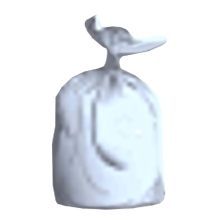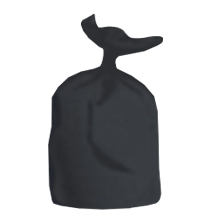Guernsey has over 42 miles of coastal paths to be enjoyed. The maritime heathland, cliff-top grasslands and west coast dunes and grasslands support a rich array of vegetation, with many species which are rare in the United Kingdom.
Path Management and Maintenance
- Guernsey's paths are cut twice a year between April and October by a team of 4-6 full time labourers. This keeps the paths clear for walkers and stops the natural progression of invasive species such as bracken and coarse grasses.
- In ideal circumstances, the cutting of the cliff paths would be undertaken after all the wild flowers have seeded. However, this would leave such a small window of time in which to carry out the cuts that this would involve a large influx of short contract labour in order to clear the paths to maintain accessibility. This is unfeasible within the current budgetary or staffing provisions and as a consequence the paths would become un-passable.
- Therefore, a cutting regime has been devised to ensure the cutting times for each section are rotated annually so that sections that are cut early one year are cut progressively later in subsequent years.
- This cutting regime ensures that each section benefits from a late cut, and helps to retain the biodiversity of the cliffs. Cutting the same sections early, before the flowers had set seed, would result in an ever decreasing seed bank and eventual loss of many flower species. Even though every effort is made to maintain access, some stretches of path may become overgrown during periods of rapid growth following warm moist conditions.
- During the winter months, the team cut back 'woody' growth and undertake various repairs/maintenance including paths, drainage channels, steps, gates, fencing and benches.
South Coast Cliff Paths
- The cliff path network of the south coast of Guernsey meanders from La Valette for 28.5 miles before finishing at Pleinmont. The south coast cliffs are the largest continuous expanse of semi-natural vegetation on the Island, consisting mainly of maritime heathland and cliff-top grassland. These habitats support a rich array of vegetation including shrubs and trees such as blackthorn, elder, gorse and hawthorn; parasitic plants such as honeysuckle; and smaller flowering plants including foxgloves, sea-pinks, sea-campion and rock samphire. Rarer plants that can be found on the cliffs are sand crocus, bladder campion and various orchids. The cliff paths are more sheltered in the south-east and there are woodlands dominated by ash, elm and sycamore. In Spring, the Bluebell Wood is beautifully carpeted with blue nodding flower heads.
- The wide variety of vegetation supports animal species, many of which are rare in the United Kingdom. Bird species found around the cliffs include the cormorant, shag, fulmar, kittiwake, oystercatcher, Dartford warbler, peregrine falcon and long-eared owls which nest in the sheltered valleys.
- The cliffs have been protected from development since 1927, though more recently in the Island Development Plan where they are designated as a Site of Special Significance (SSS). This status is similar to that of Sites of Special Scientific Interest (SSSI's) in the UK context, and affords it the highest level of protection under local planning law.
- The Royal Society for the Protection of Birds (RSPB) also identified the area as an Important Bird Area in 1992, since it is internationally significant as a Dartford Warbler breeding area.
- The cliffs are also protected by various local bylaws or ordinances, including the Places of Recreation (Amendment) Ordinance, 1996, and the Control of Dogs Ordinance, 1992. Cycling or horse riding on the cliff paths is not permitted at any time under the Places of Recreation Ordinance. Dog owners are reminded that they must always pick up after their pets when on the cliff paths, wrapped dog waste may be disposed of in any of the coastal litter bins.
Cliff path access
- Information on bus routes to the cliffs can be on their website.
- There are many car parks with cycle parking along the cliff paths, with easily accessible benches to enjoy the views.
West Coast Paths
- The scenic coastal footpath is nearly 14 miles long, starting at Grandes Rocques on the west coast and running north towards Chouet before it skirts L'Ancresse Common, and ends near the Vale Castle on the east coast. Apart from a few short inclines the path is almost flat throughout and is very popular all year round, offering walkers glorious views over a varied coastline of small harbours, rocky inlets and the wide expanses of sand at Ladies Bay and Pembroke.
- There are numerous car parks and bus stops throughout the coastal path route so it is easily accessible from all parts of the island. The current bus timetables is available from www.buses.gg.
- Cyclists are permitted to use the coastal path but are asked to ride with care and consideration to other users, and at no more than 10 miles per hour. Cyclists should always give way to pedestrians. Please note that cycling is not permitted on any of the cliff paths between La Vallette and Pleinmont.
- The coastal dunes and grass lands adjacent to the coastal path are amongst the rarest habitats in Guernsey. Dunes and coastal grass lands support a rich variety of plants and insects and these areas are managed by the Agriculture, Countryside and Land Management Service to promote the best conditions for some of the rare plants that grow there.
- The introduction of the west coast footpaths over ten years ago has helped to greatly improve the biodiversity of these areas by reducing the unintentional trampling of plants and the disturbance of ground nesting birds.
Coast Path Access
- Bus routes can be found on their website
- There are also many car parks along the coast, with easily accessible benches to enjoy the views.













